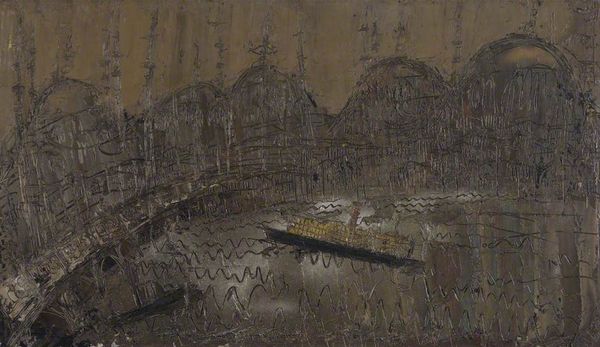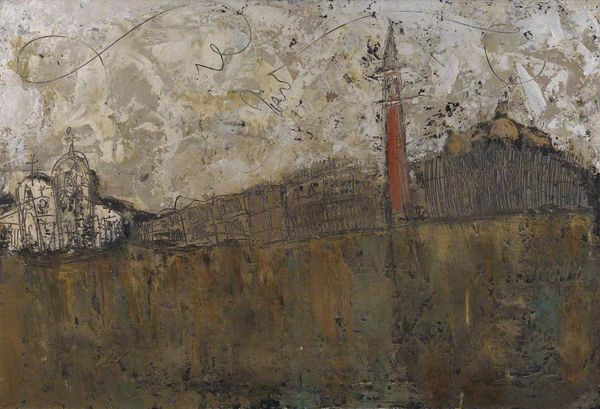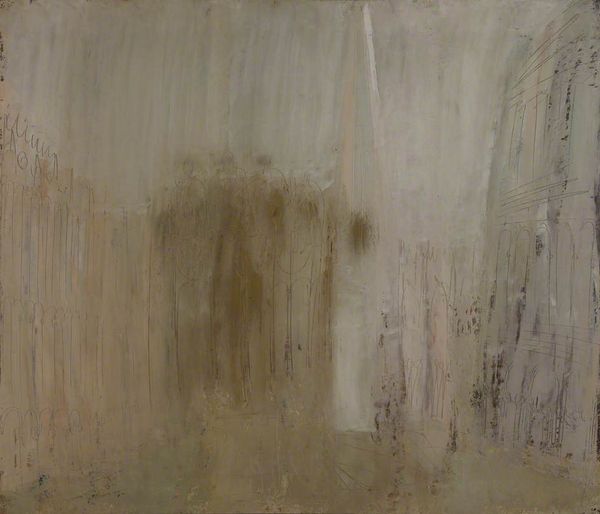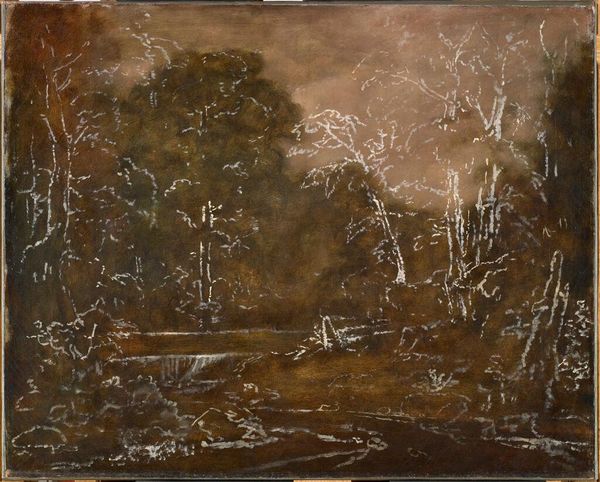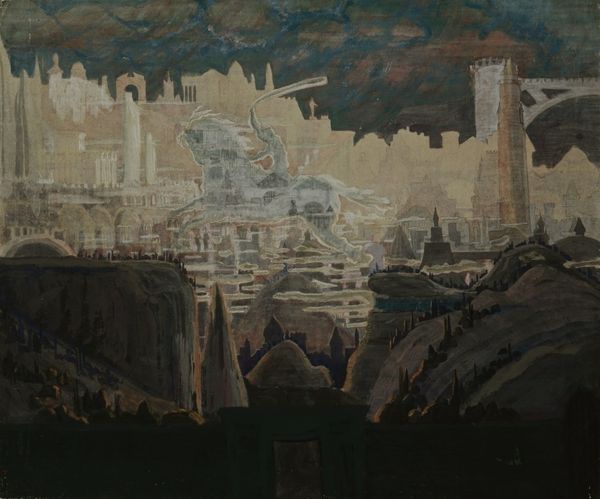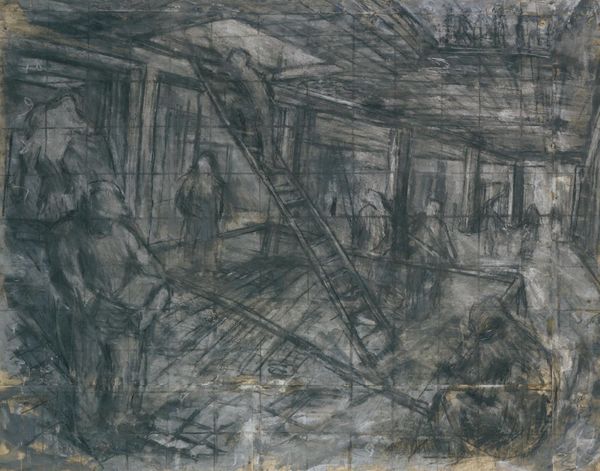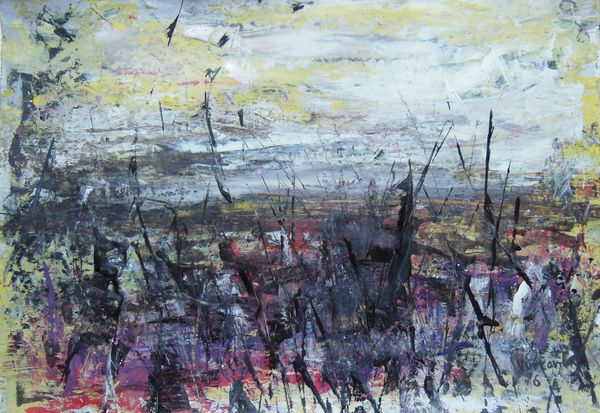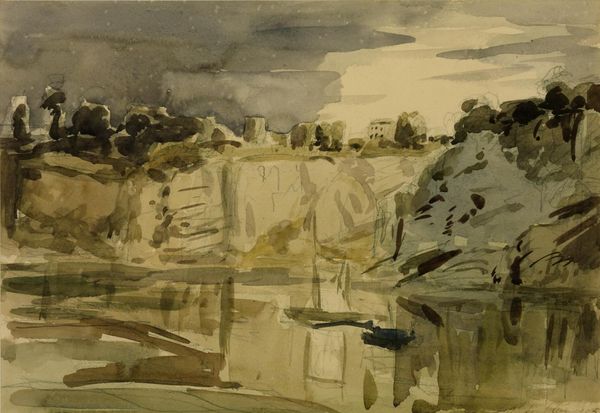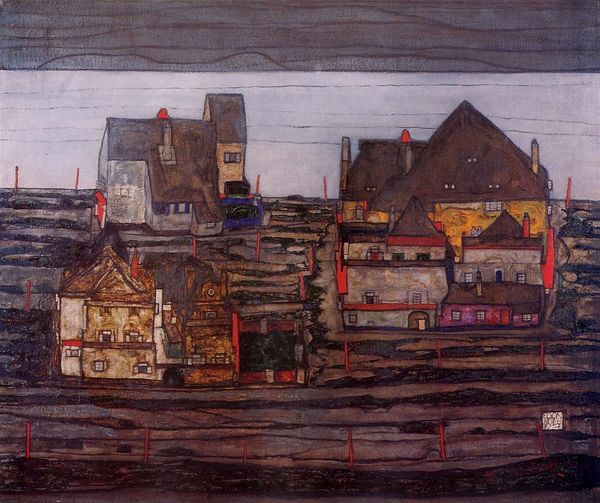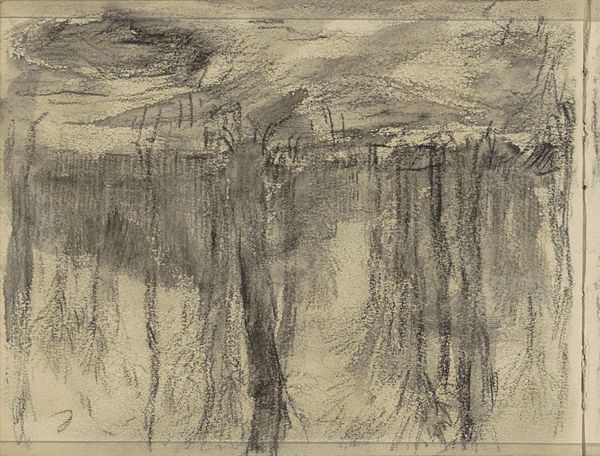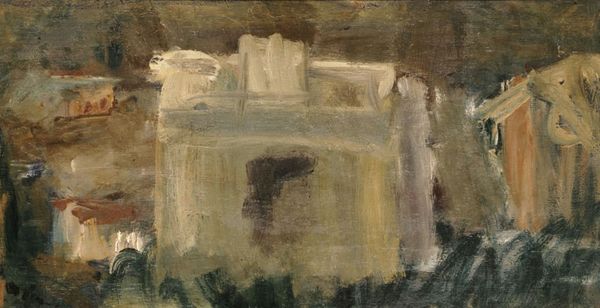
Copyright: William Congdon,Fair Use
Editor: This is William Congdon's "India, Temples No.2 (Sri Ranganathaswamy Temple, Tiruchirapalli)," painted in 1954, a mixed-media piece. It's so somber, almost oppressive in its depiction of these towering temple structures. How do you interpret this work? Curator: What strikes me immediately is the tension between the seemingly reverent subject matter – temples, sacred spaces – and the unsettling feeling evoked by the artist’s heavy impasto and muted palette. Consider that this was painted in 1954. What do you think Congdon might be trying to convey about faith, colonialism, or even the experience of cultural displacement at the time? Editor: Displacement...I hadn't thought of that. It makes me think about the disruptive effects of Western perspectives encountering Eastern spiritual traditions. But why this heavy, almost chaotic application of paint? Curator: The materiality itself is doing work. The thick paint, the rough brushstrokes—they could be interpreted as mirroring the complexities, perhaps even the anxieties, of cultural exchange and the challenges of representing such a profound, and potentially misinterpretable, subject. The very act of "painting" India through a Western lens becomes a political statement in itself. Do you see any connection to other artists, or social movements during the same period? Editor: I see it now... that raw, expressive quality. The work almost becomes less about the temples themselves and more about Congdon's personal and, by extension, a Western experience of 'otherness.' So, the act of observing and recreating, becomes charged with potential cultural biases and power dynamics. Curator: Exactly. And by acknowledging that potential, Congdon invites us to critically examine our own positions as viewers, interpreters, and inheritors of this complex history of cross-cultural engagement. It’s less a painting "of" India, and more a painting "about" the act of seeing and understanding India through a particular, and perhaps limited, lens. Editor: I will never see this in the same way, understanding the layered meaning that goes beyond a first, quick look. Curator: Me neither. The sociopolitical dimension that surrounds every artist is always something to keep in mind and heart.
Comments
No comments
Be the first to comment and join the conversation on the ultimate creative platform.

